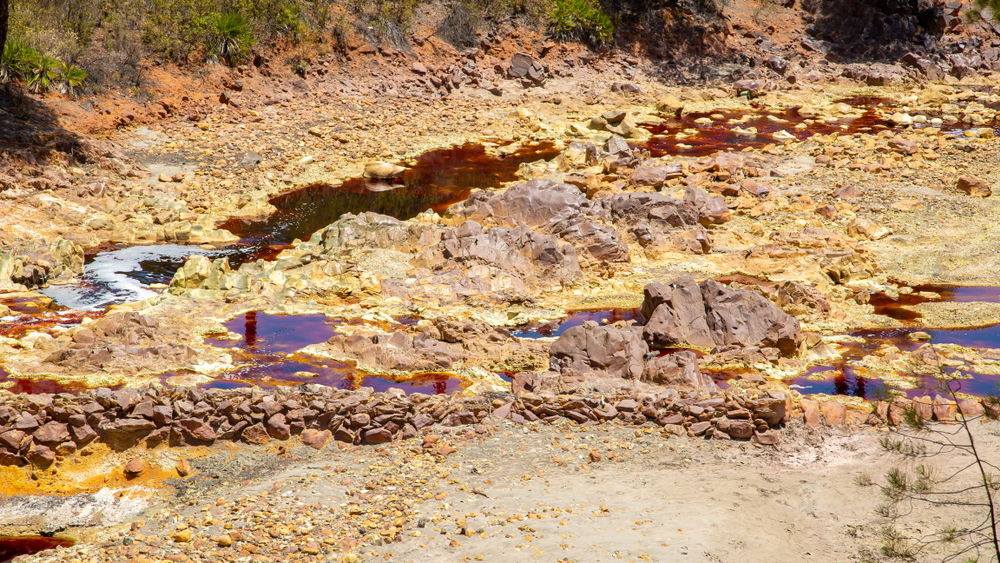The goal of remediation is to remove contamination, ensuring the site is safe and meeting health and environmental regulations. Traditionally (particularly in Australia), remediation has involved the physical removal of contaminated matter (either “dig and dump” or “pump and treat”).
But there is another option: bioremediation, or in-situ treatment. It’s not a new practice, and it has already been widely accepted in other countries. But Australia has been a little slower on the uptake, and many are still dubious as to whether it can compare to the results of physical remediation.
So, how does bioremediation really compare?
When it comes to choosing a remediation option, there are often three main driving factors:
- How much will it cost?
- How effectively will it remove contamination?
- How long will the process take?
Here, we’ll look at each of these factors – cost, time and effectiveness – to determine how removal and in-situ remediation practices compare, and how you can ensure you’re choosing the right option to meet your parameters.
Remediation vs. Bioremediation
Cost
When it comes to the cost of remediation options, physical removal of contamination can far outweigh it’s in situ counterpart.
The cost of pump and treat or excavation remediation can quickly add up. Beyond the often-high costs of labour and equipment (and site shutdown, if required), physical removal options are highly energy-intensive, which drives the cost substantially.
Excavation is an especially costly exercise, and risks spreading contaminants (which can lead to extra costs, fines and logistical drama).
Bioremediation compares very favourably with respect to cost. There are upfront environmental diagnostic costs to determine what the native microflora of a site looks like and what biogeochemical processes this indigenous microbiota can catalyse. These are on a par with analytical chemistry analyses for site characterisation and can piggyback off existing site characterisation infrastructure (monitoring wells) and field sampling activities. A client may also want bench tests to be sure a remediation strategy is applicable to their site. The costs of implementing bioremediation approaches (biostimulation with chemical amendments or bioaugmentation with live cultures) are relatively trivial once injection and monitoring well infrastructure is in place and when compared to the traditional dig and dump remediation methods.
Time
Typically, comprehensive environmental diagnostic work for bioremediation can be completed in 3 months. Depending on the site (and the mass of light or dense non-aqueous phase liquids), clean-up exploiting bioremediation can take up to a year. But once conditions are appropriate, microorganisms will be working 24/7 with minimal maintenance of bioremediation systems until the contaminants are gone.
In some circumstances, remediation work is time sensitive due to high risk of contamination spreading to sensitive receptors (including water sources or environments home to protected or endangered species.) In these situations, you might have no choice but to extract contaminated material physically.
However, bioremediation used post-excavation or after NAPL removal can deliver better results than physical or chemical removal alone. Bioremediation can be a perfect polish to take care of residual or diffuse aqueous phase contamination. In urgent cases where pollutant movement has been physically contained to minimise immediate risks, bioremediation can be used to destroy the contaminant.
Effectiveness
As previously mentioned, bioremediation requires extensive testing and analysis before stimulants or cultures are introduced to a contaminated site. This analysis means that if a site is deemed viable (which 80-90% are), bioremediation will have a near 100% success rate.
This is due to analysis results ensuring the appropriate cultures are introduced to the environment in the right amount, and will continue to be active until all contaminants are removed. Bioremediation restores the ecosystem by destroying pollutants, enabling it to return to a ‘normal’ or ‘healthy’ natural state with minimal disruption.
Physical removal can, if done well, be just as effective. But it does carry some extra challenges:
- Excavation can easily miss areas of contamination, leaving contaminated samples behind
- There are limitations to the pump and treat method if the system is dependent on solubilisation/dissolution of contaminants
- There is a diminishing return on pump and treat remediation investment, as its impact diminishes year after year, while remaining at the same cost
It’s important to remember that containment or excavation does not destroy pollutants, but simply stops it reaching sensitive receptors. Such solutions require management potentially indefinitely, so it is a future burden that can be costly and difficult to sustain.
Other factors to consider
While cost, time and effectiveness are often driving factors in remediation choice, there are other vital factors that should be considered, including the social and environmental impact of remediation.
As environmental issues continue to play an influential role in the community and corporate industries, more organisations have been looking for more sustainable remediation options. The energy consumption, gas and chemical emissions, and resulting environmental footprint of traditional remediation methods is impacting on companies’ social license and efforts to ‘go greener’.
The National Environment Protection Measure (a Federal guidance document for contaminated site characterisation and remediation) has published a remediation hierarchy for groundwater, which states in-situ remediation should be the first option (where feasible).
Getting the best remediation results
When we look at the results of the comparison, we can see both bioremediation and traditional remediation methods are effective (even though excavation does present some challenges). Bioremediation is nearly always the more cost-effective option, but it also requires more time.
While this comparison doesn’t prove to find a “best” method (that will ultimately depend on each decontamination project, and be affected by budget, site access, contamination risks, etc.), it does prove that bioremediation more than matches the abilities of traditional remediation methods.
For those projects without strict parameters, bioremediation should be considered as a first option. And, if physical removal proves to be the best option for a particular site, bioremediation should be strongly considered in conjunction as a follow-up method.
Learn more about making bioremediation fit for your project here.
Despite its many benefits and applicability to many projects, bioremediation is still an emerging remediation option in Australia, making expertise difficult to source. Novorem are locally based leading experts in bioremediation, with wide experience undertaking site testing, analysis and implementation in the Australian market.
If you are interested in exploring bioremediation and determining the benefits for your site, get in touch with me via email or call me on +61 2 4869 3261


